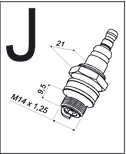ELECTRICAL PROPERTIES
The fouling of insulator tip surface with combustion deposits reduces electrical insulation resistance . If the insulation resistance drops, there also occurs a drop in electrical voltage supplied to the spark plug from the ignition system. If, as a result of heavy fouling of the insulator tip, the insulation resistance decreases down to the value when the electrical voltage supplied from the ignition system is lower than the voltage required by the spark plug, there will be misfire of spark between the spark plug electrodes and a failure of the engine function.
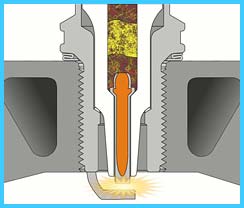
![]()
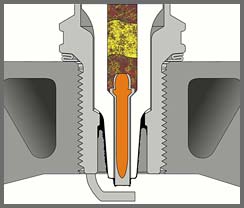
Reduction of the insulation resistance from electric energy leakage on the insulator tip surface
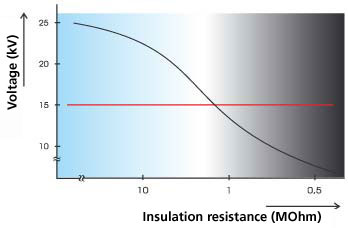
| - | Voltage required by the spark plug |
| - | Voltage supplied by the ignition system |
Voltage required by the spark plug and voltage supplied by the ignition system. In order that a discharge can occur between the spark plug electrodes, it is necessary that the ignition system can supply voltage of a certain value.
If the spark plug requirement concerning the voltage supplied by the ignition system exceeds its possibilities, there will not occur any spark jump across the spark gap. It generally applies that the spark plug voltage requirement increases if the electrode gap rises and during acceleration. The voltage supplied by the ignition system decreases at starting, low ambient temperatures and at a high speed of the engine.
Relation between voltage supplied by the ignition system and the spark plug requirement
A. voltage required by the spark plug (new)
A1. voltage required by the spark plug (used)
B. voltage supplied by the ignition system
C. insufficient voltage supplied by the ignition system

Relation between electrode gap and voltage requirement of the spark plug
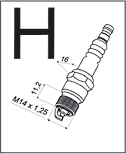
Relation between the spark plug wear and spark plug voltage requirement
